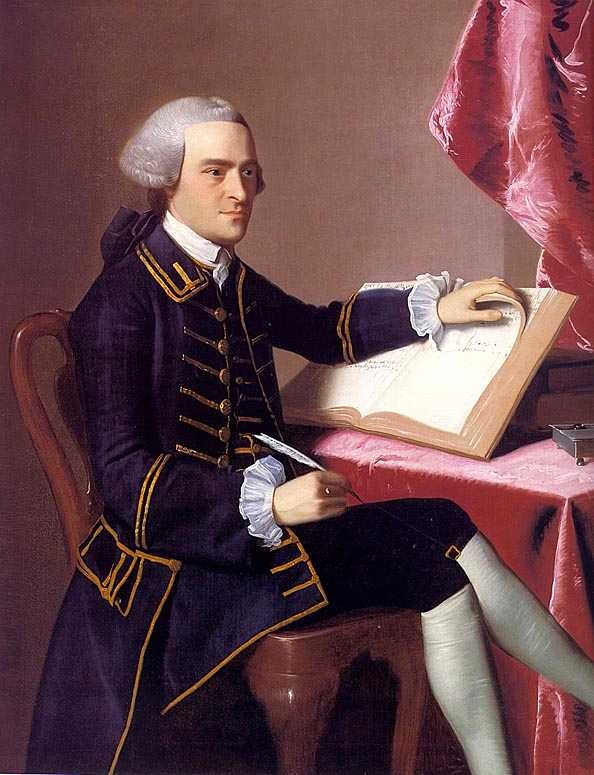Contents

Contents
Quick facts
- Born: 23 January 1737 in Braintree, Massachusetts.
- John Hancock was a prominent Patriot of the American Revolution, best known for his large and bold signature on the United States Declaration of Independence.
- He served as President of the Second Continental Congress, where he played a crucial role in managing the colonial war effort.
- Hancock was one of Boston’s leaders during the crisis that led to the outbreak of the American Revolutionary War in 1775.
- He was the first Governor of Massachusetts and was known for his efforts to rebuild Boston and support the development of the state after the war.
- Hancock’s wealth, derived from his successful mercantile business, helped finance the revolutionary cause.
- He was a key figure in the Sons of Liberty, a group of patriots who organized opposition to British taxation and policies.
- John Hancock’s legacy includes his philanthropy, public service, and his enduring symbol as a signer of the Declaration of Independence.
- Died: 8 October 1793 in Boston, Massachusetts.
- Buried in the Granary Burial Ground, Massachusetts.
Biography
John Hancock, American Revolutionary statesman, was born in Braintree (now Quincy), Massachusetts, in 1737. After graduating from Harvard in 1754, he entered the mercantile house of his uncle, Thomas Hancock of Boston, who had adopted him, and on whose death, in 1764, he became heir to a large fortune and a prosperous business.
In 1765 he became a selectman of Boston, and from 1766 to 1772 was a member of the Massachusetts general court. An event which is thought to have greatly influenced Hancock’s subsequent career was the seizure of the sloop Liberty in 1768 by the customs officers for discharging, without paying the duties, a cargo of Madeira wine consigned to Hancock. Many suits were thereupon entered against Hancock, which, if successful, would have caused the confiscation of his estate, but which undoubtedly enhanced his popularity with the Whig element and increased his resentment against the British government.
He was a member of the committee appointed in a Boston town meeting immediately after the Boston Massacre in 1770 to demand the removal of British troops from the town. In 1774 and 1775 he was president of the first and second Provincial Congresses respectively, and he shared with Samuel Adams the leadership of the Massachusetts Whigs in all the irregular measures preceding the American Revolutionary War. When General Thomas Gage sent British troops to Lexington and Concord on 18–19 April 1775 to secure materials of war, he also intended to capture Hancock and Adams, who were temporarily staying at Lexington. These two leaders were expressly excepted in the proclamation of pardon issued on the 12 June by Gage; their offenses, it was said, being of too flagitious a nature to admit of any other consideration than that of condign punishment.
Hancock was a member of the Continental Congress from 1775 to 1780, was president of it from May 1775 to October 1777, as such was the first to sign the Declaration of Independence, and was a member of the Confederation Congress in 1785 – 86. In 1778 he commanded, as major general of militia, the Massachusetts troops who participated in the Rhode Island expedition. He was a member of the Massachusetts Constitutional Convention of 1779 – 80, became the first governor of the state, serving from 1780 to 1785 and again from 1787 until his death.
Although at first unfriendly to the Federal Constitution as drafted by the convention at Philadelphia in 1787, he was finally won over to its support, and in 1788 he presided over the Massachusetts convention which ratified it.
Hancock was not by nature a leader, but he wielded great influence on account of his wealth and social position, and was liberal, public-spirited, and, as his repeated election — the elections were annual — to the governorship attests, exceedingly popular. He died at Quincy in 1793.

